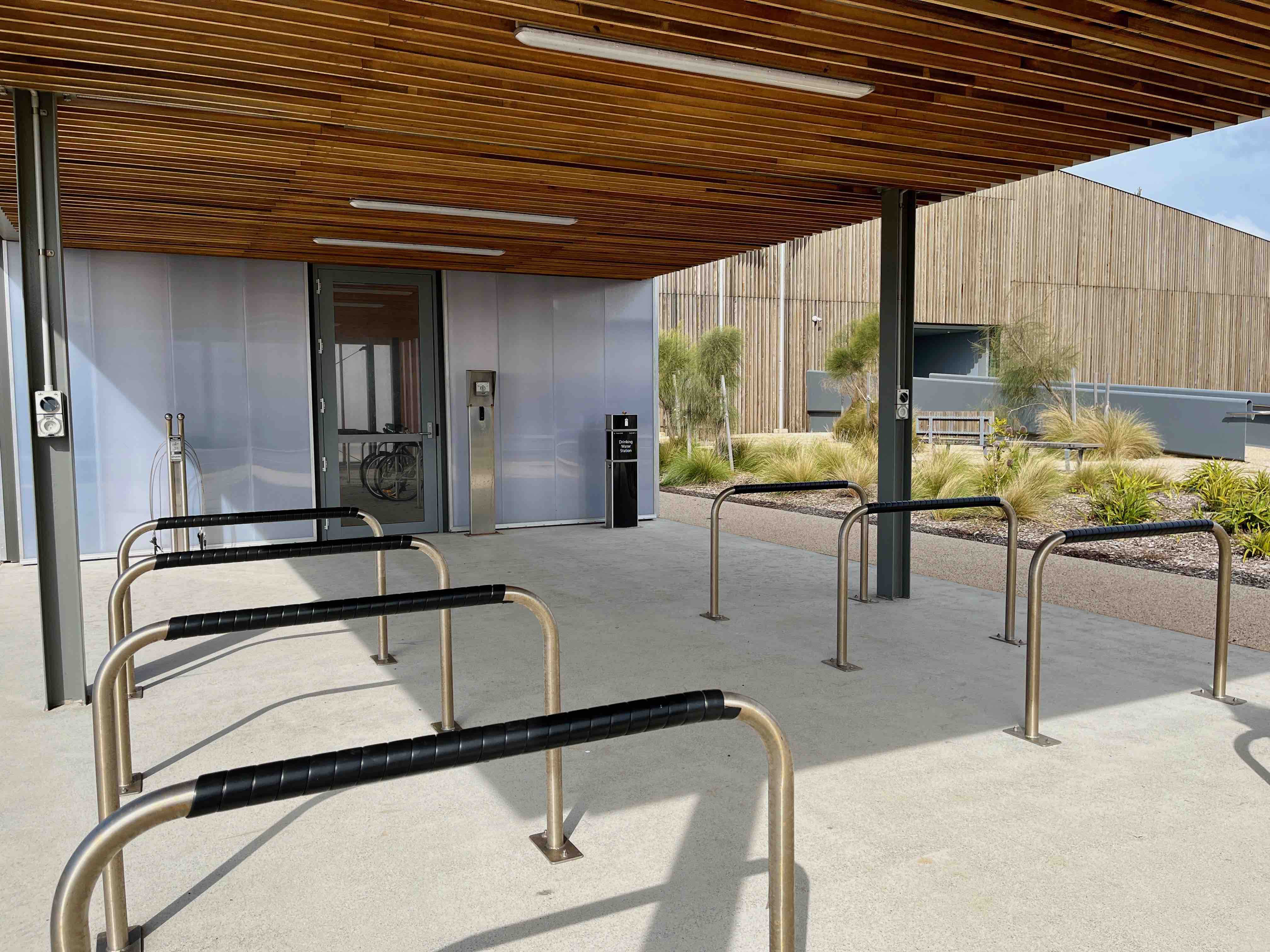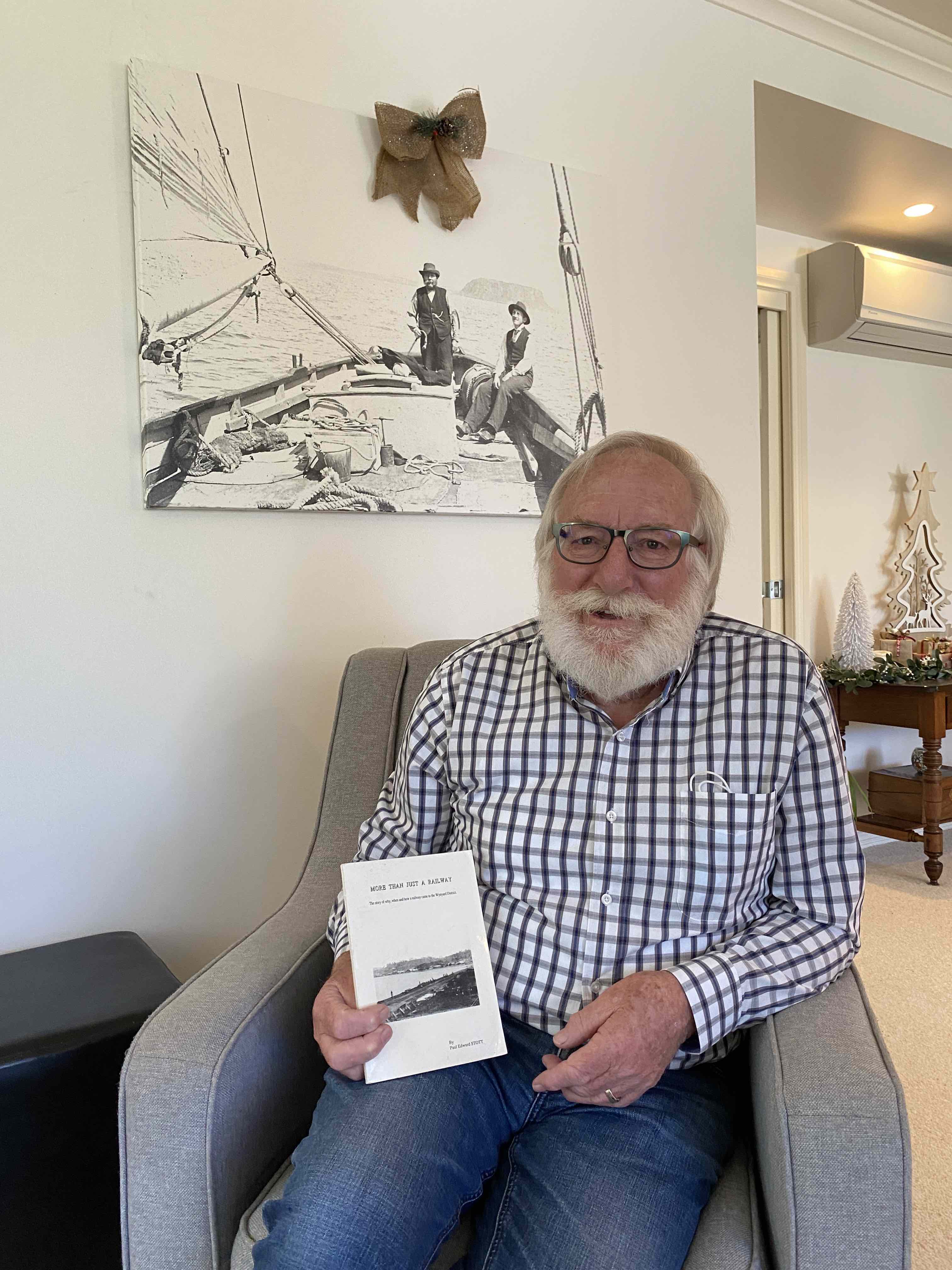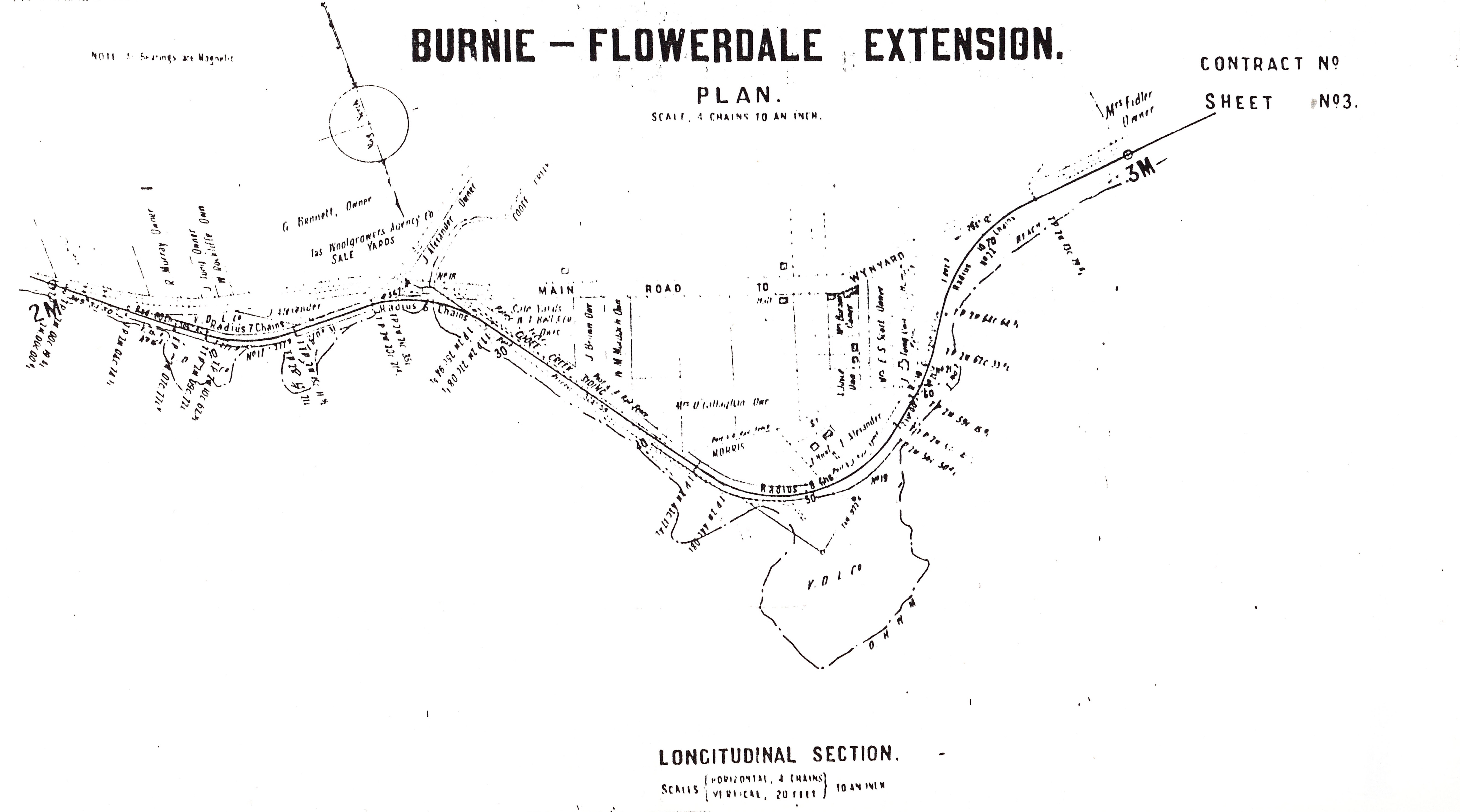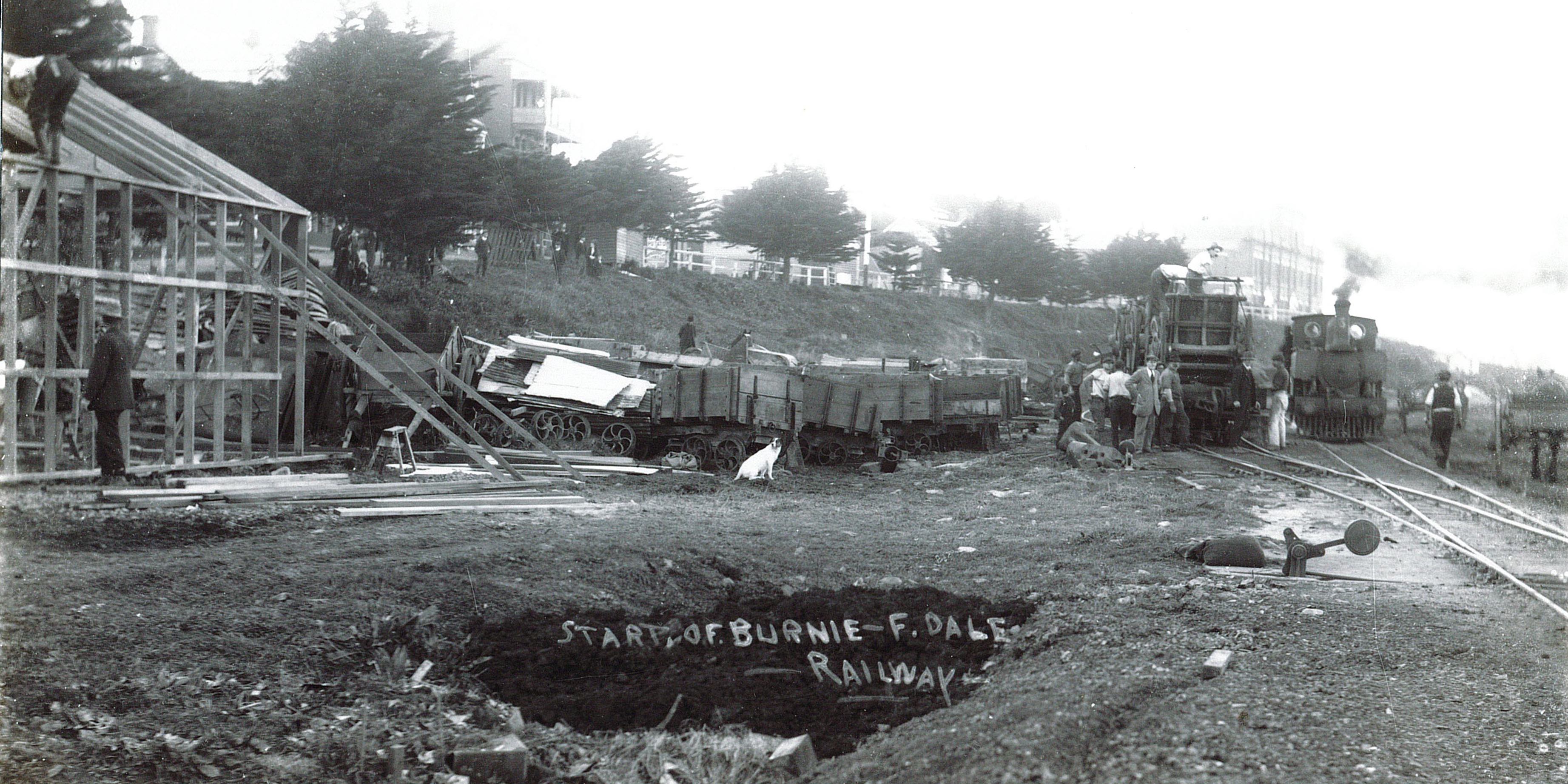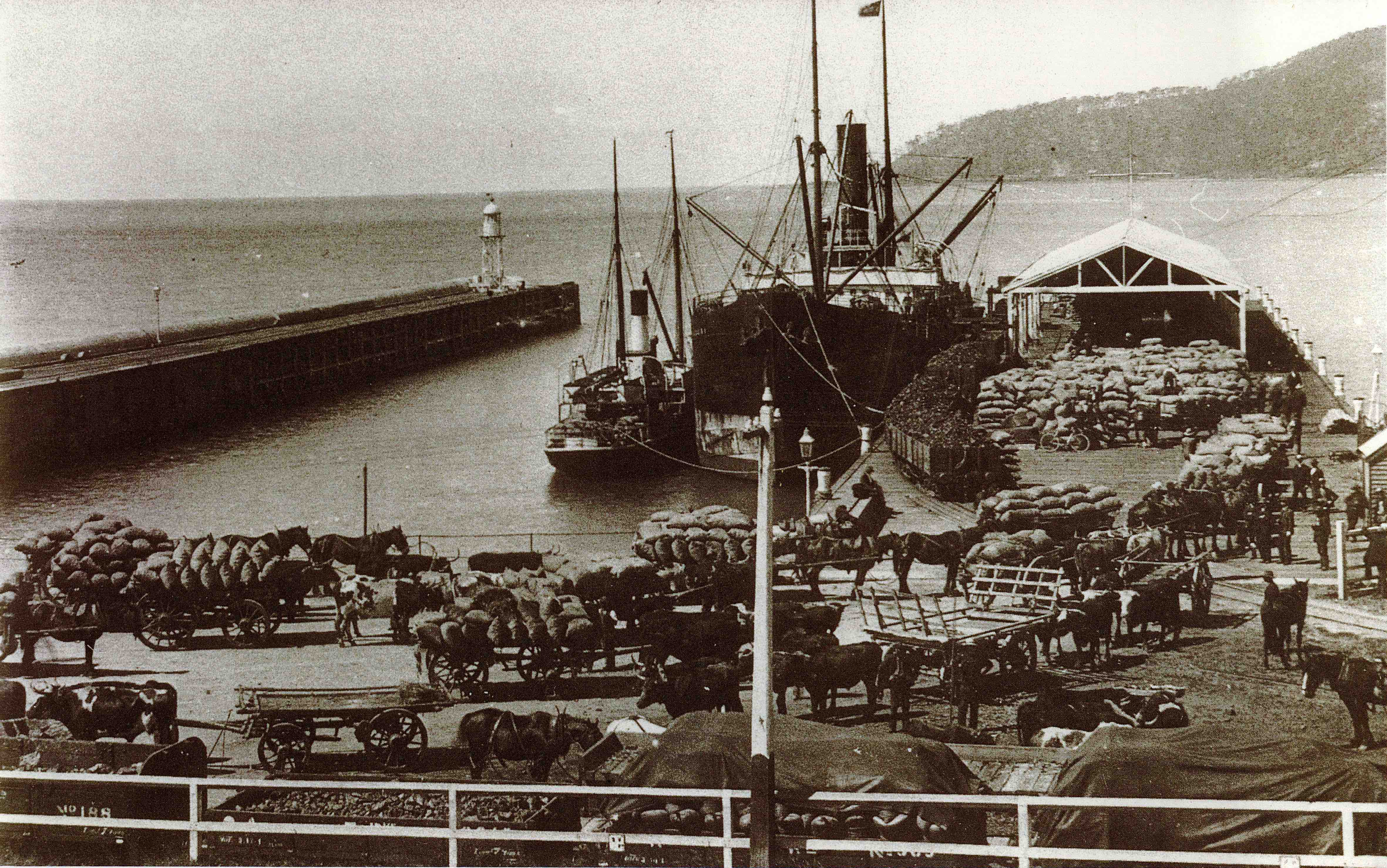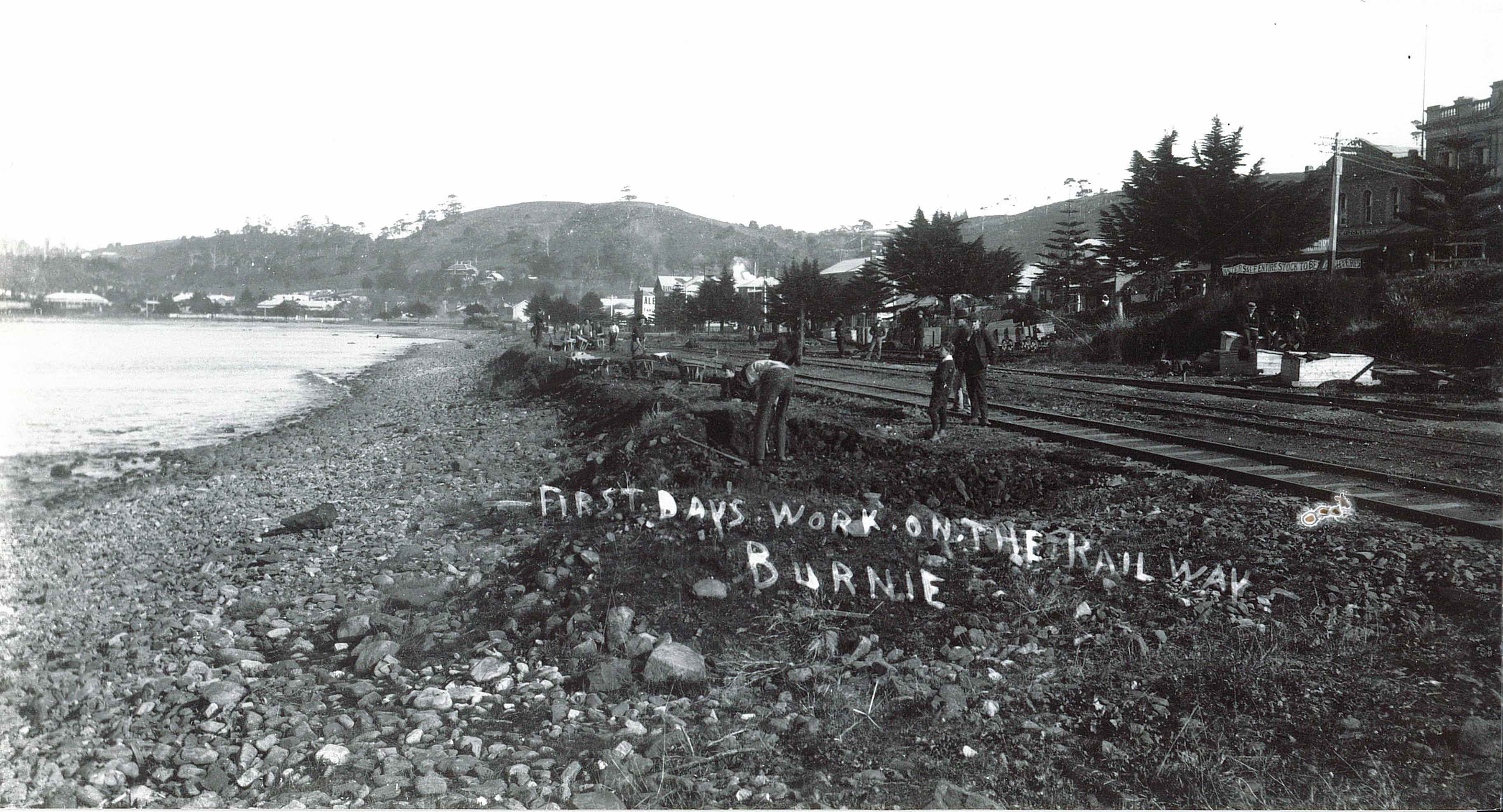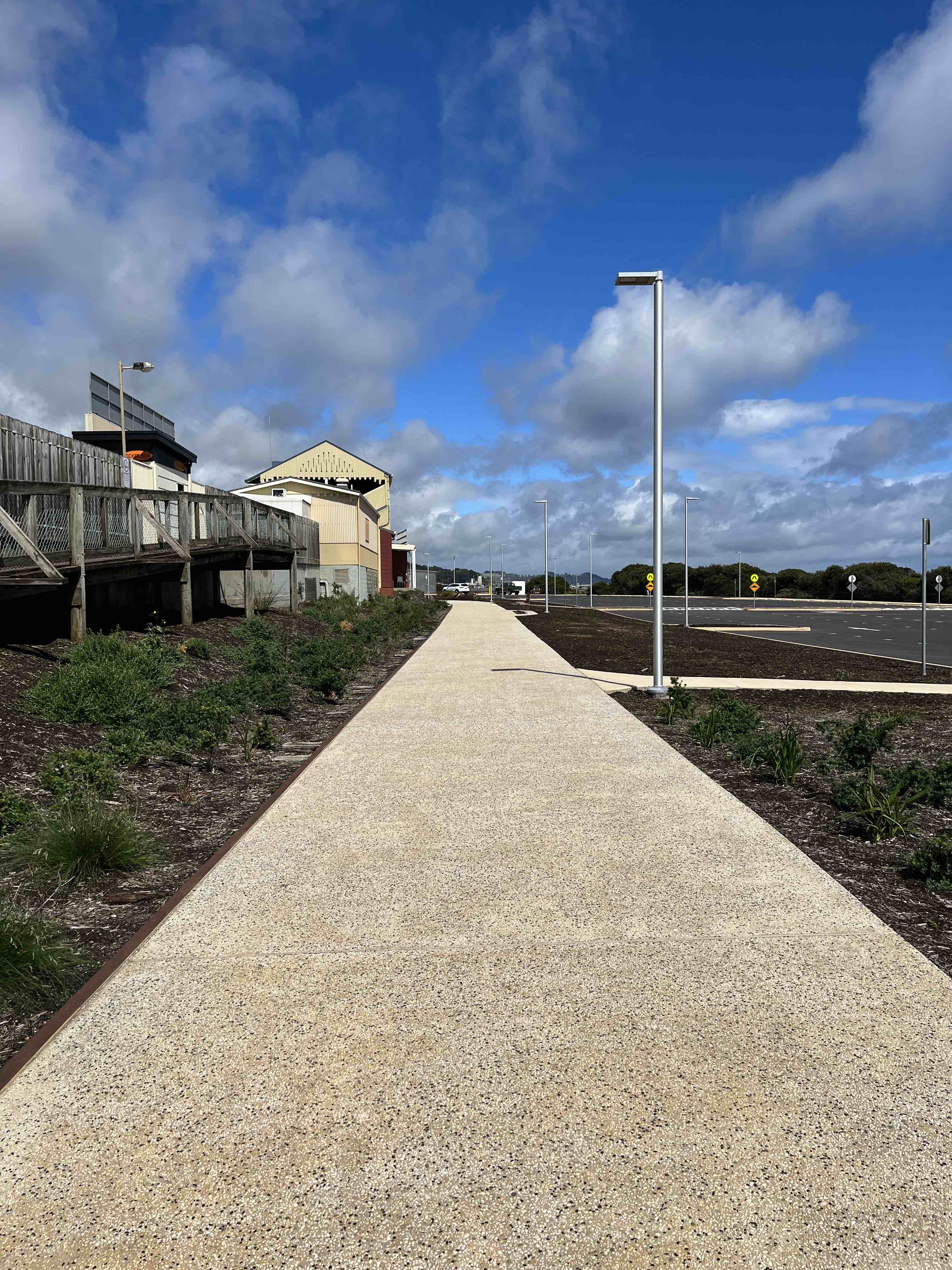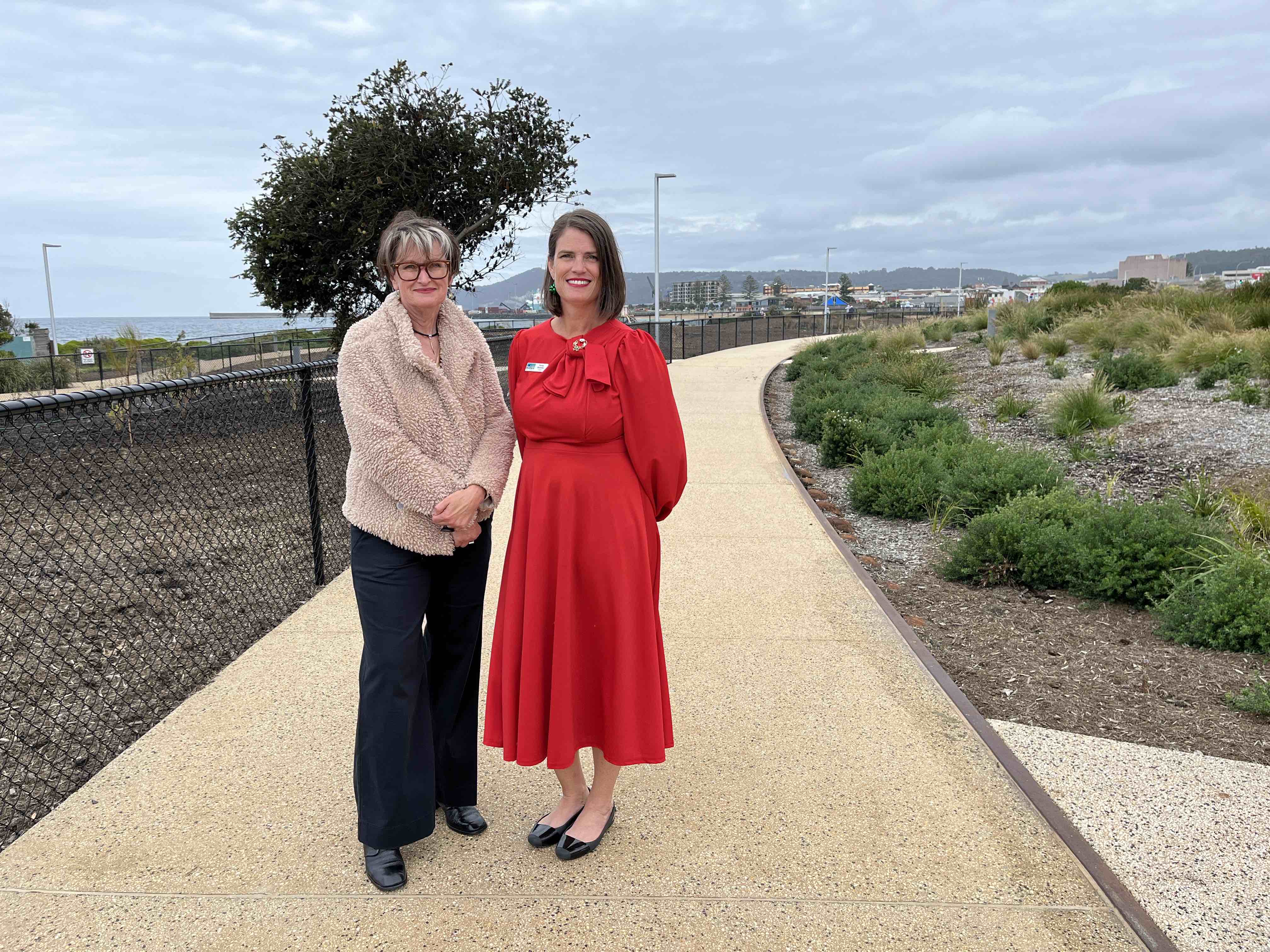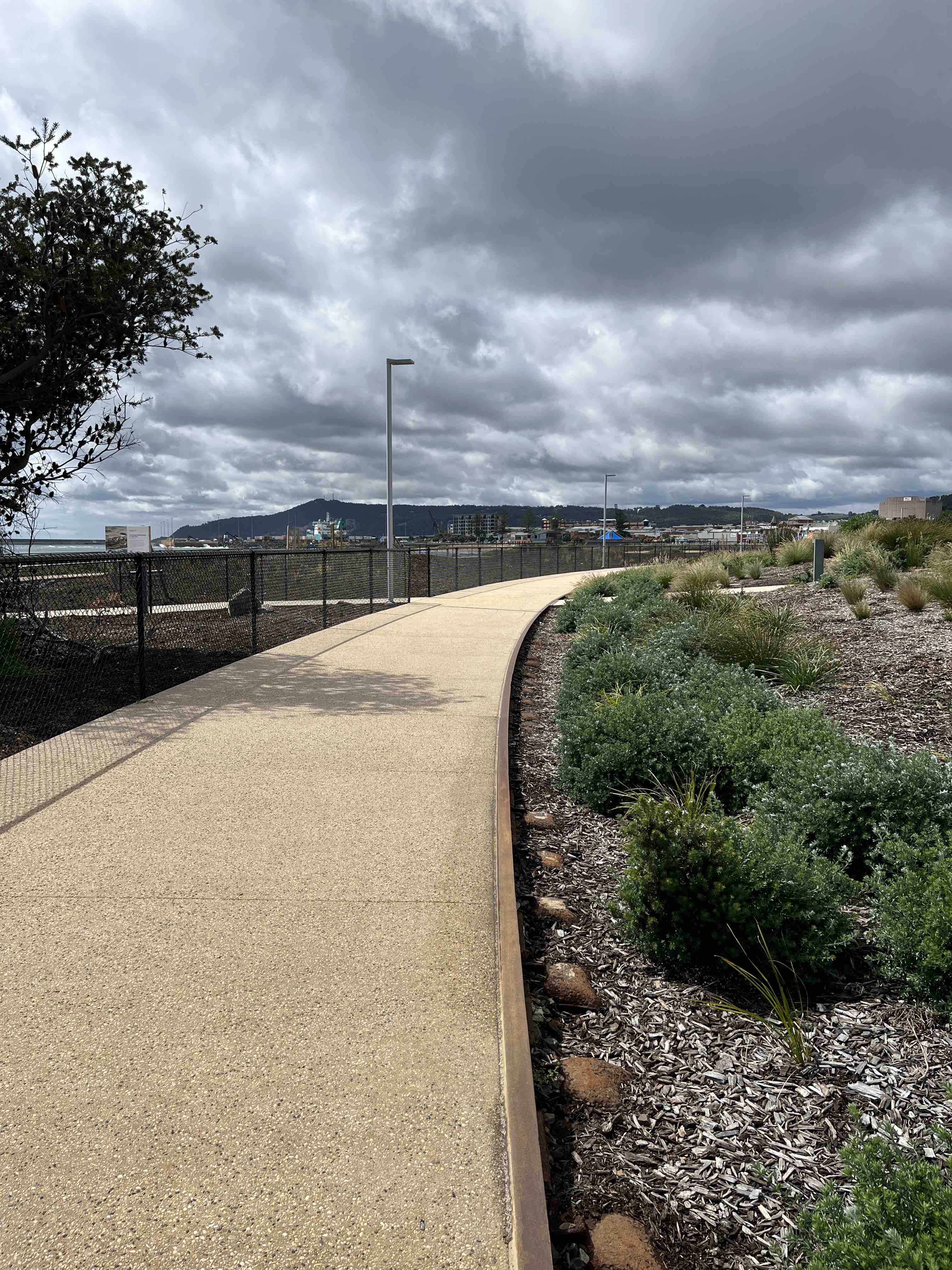Stretching alongside the University of Tasmania’s Cradle Coast campus at West Park is a decommissioned railway line that’s been revived to host a new community experience.
A section has been transformed into a shared pedestrian and bike path that’s now open through the precinct and contributing to the community-connecting North West Coastal Pathway.
Measuring three metres wide, it features viewing platforms and seating, with a series of native plants bordering either side that were chosen for their local provenance and hardiness to the coastal conditions.
In acknowledging the railway corridor’s past, the original infrastructure has been preserved below as formwork for the new route and is complemented by a community bike hub near the main campus entrance featuring a bike repair station, e-bike charging, undercover secure parking and a drink bottle refill tap for everyone’s use.
University of Tasmania Pro Vice-Chancellor (Cradle Coast) Associate Professor Sonya Stanford said it had been important to fund the railway revitalisation as part of the campus move to West Park.
“Transforming the railway line into a public path has improved the community accessibility and amenities here while honouring the site’s heritage and creating an even more welcoming campus precinct,” Associate Professor Stanford said.
“We hope folk passing by feel inspired to explore and experience what else we offer here, whether it be our learning programs and events, the public café, borrowing from the library or just enjoying the many indoor and outdoor spaces.”
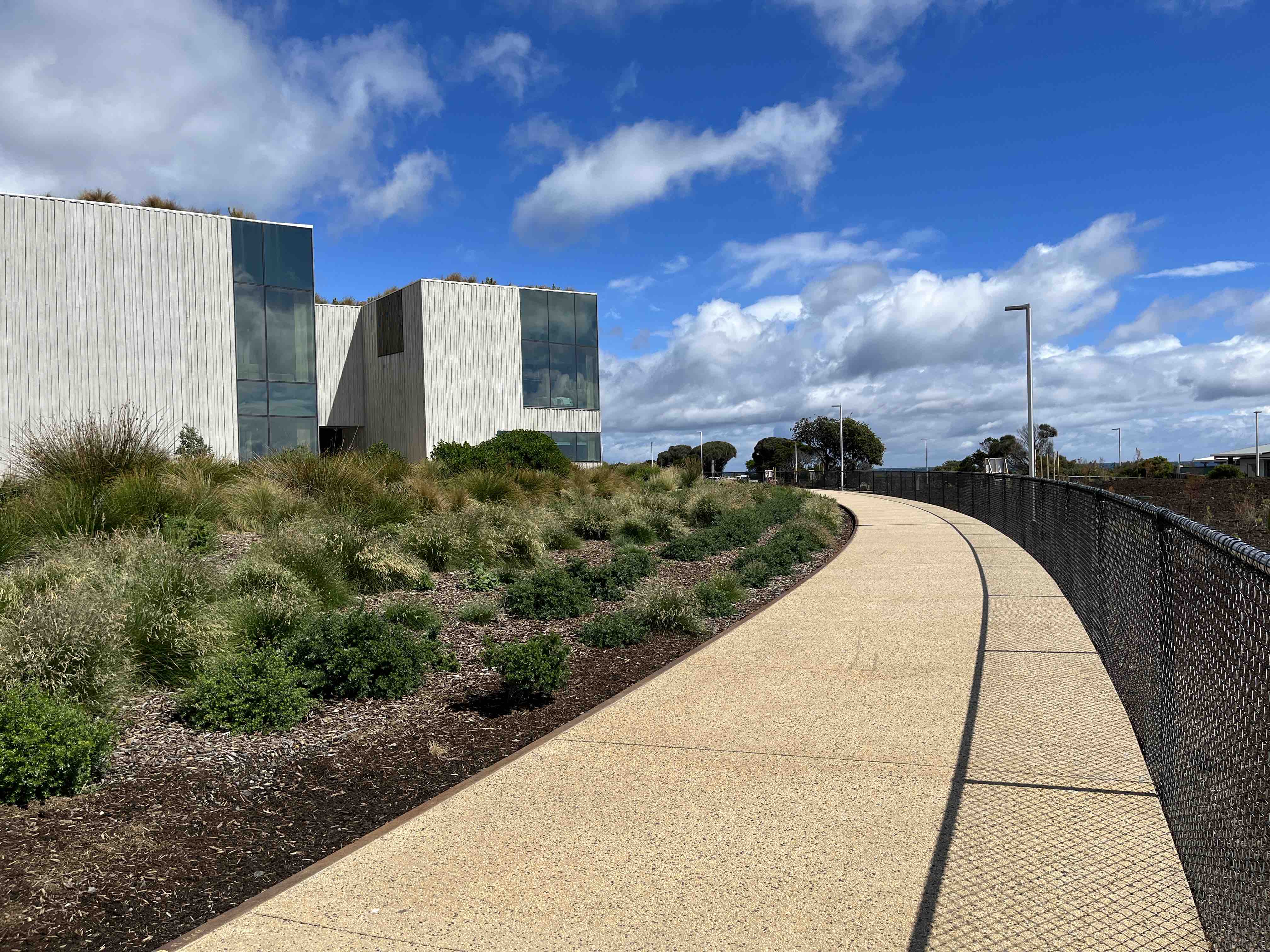
More than just a railway line
The railway line skirting around West Park formed part of the Western Line’s Burnie – Flowerdale extension, which officially opened for operation 110 years ago in 1913.
Paul Stott is a North-West historian, author and University of Tasmania alumnus who extensively researched the origins of this westbound train route and published his findings in his book ‘More than just a railway.’
“It started as a university assignment on Tasmanian history, but because of my interest, it wasn’t just about sleepers and railway lines, I focussed on the people who were involved,” Mr Stott said.
The line was built during a time of ‘railwaymania’ to predominantly support timber mills and farmers in the outlying districts with a lifechanging means of freighting produce to the major deep-water port of Burnie for mainland export.
Prior to this, the only way of getting goods to the Burnie wharf had been via horse and cart on almost non-existent roads, or aboard vessels sailing from smaller ports scattered along the North-West coast.
While local demand for a railway line had been strong, it took some years for construction to begin.
“Two Royal Commissions investigated the need for a railway in 1904 and 1906, and if that were not enough, a Public Works Department enquiry was held in 1908,” Mr Stott said.
Once built, the railway also served as passenger transport, spanning as far as Myalla until 1922 when the line was extended further west to Wiltshire where it connected with the Stanley to Trowutta line.
Services passing through West Park ceased in March 2003, and since 2016, access beyond the Burnie Toll wharf (westbound) has been closed to all rail traffic.
Promoting active, healthy transport
The University has a long and deep commitment of supporting and achieving sustainable outcomes, including active, healthy transport.
Corey Peterson, Chief Sustainability Officer said consideration of sustainable transport choices had been prioritised for West Park from the beginning of the campus design process.
“Prioritising the protection of the railway corridor has helped us provide a high-quality link with the North West Coastal Pathway which includes access to a major node – our community bike hub and campus facilities,” Mr Peterson said.
“This provides e-bike charging, repair facilities, a water refill station and secure undercover parking for not just those coming to campus but those traversing it as they explore the beautiful coast of North-West Tasmania.”
The transformed railway line path was designed by landscape architects ASPECT Studios, and brought to life in collaboration with Philp Lighton Architects who were involved in the design and coordination of the site works as well as leading the overall project delivery at West Park with Wardle, design lead for the Northern Transformation project. The community bike hub was designed by Wardle and Room 11 with local firm Fairbrother leading the construction of both projects.
The railway corridor infrastructure continues to be owned by TasRail and Ministerial approval was provided to create the new path above.
